Si eres un entusiasta del surf en el estado de la estrella solitaria, ¡has llegado al lugar correcto! Desde las icónicas costas de South Padre Island hasta las calas ocultas de Coastal Bend, hemos recorrido el estado para ofrecerte los destinos de surf más codiciados. Ya seas un profesional experimentado o un recién llegado al arte de surfear olas, estos lugares satisfacen a los surfistas de todos los niveles y prometen sesiones inolvidables y condiciones prístinas. Esta guía revela los 15 mejores lugares para surfear. Surfeando en Texas , donde podrás atrapar las olas más épicas y elevar tu experiencia de surf a nuevas alturas.
Surf en Texas: ¿Qué lo distingue?
Mientras que el surfear en texas Puede que no sea tan consistente ni tan potente como algunas de las mecas del surf más famosas del mundo, pero este estado costero alberga un encanto único que lo distingue del resto. En esta sección se explicará por qué. surfeando en texas Una experiencia verdaderamente única para cualquier surfista aventurero.
Las estaciones de olas en Texas
La primavera es la época ideal para El surf en Texas ofrece la oportunidad de aprovechar el final de las olas de invierno y, al mismo tiempo, dar la bienvenida al comienzo de la temporada de olas de verano. Si estás planeando un viaje de surf a Texas, este es el momento ideal para aumentar tus posibilidades de conseguir olas de calidad.
Sin embargo, es importante tener en cuenta que durante la mayor parte del año, las olas en Texas tienden a ser relativamente agitadas e inconsistentes. Esto no significa que las olas sean “insurfeables”, sino surfeando en texas Requiere que los surfistas pongan un esfuerzo extra y paciencia. Las olas huracanadas de verano y otoño a veces pueden generar olas más potentes y desafiantes que realmente pondrán a prueba sus habilidades.
La cultura única del surf en Texas
Surfeando en Texas es una experiencia especial porque la cultura del surf no es la principal fuerza impulsora detrás de las ciudades costeras. En cambio, encontrarás una combinación única de encanto de ciudad del Oeste y ambiente de ciudad surfera, creando un entorno entretenido y acogedor que es verdaderamente único.
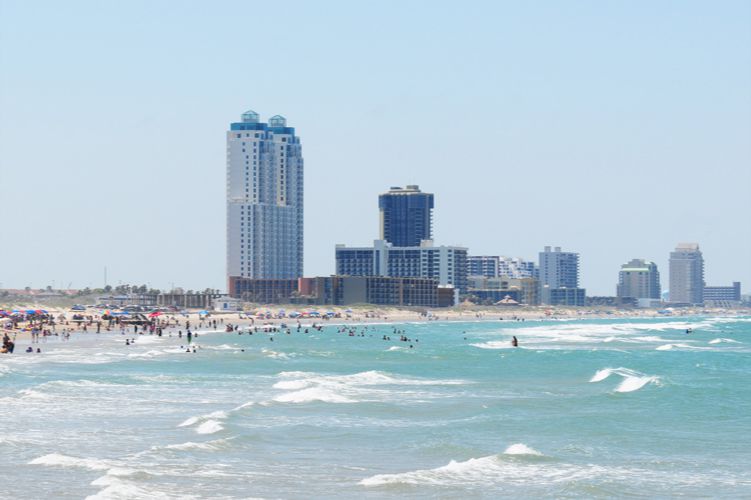
Equipo esencial para hacer surf en Texas
Las temperaturas del agua en Texas pueden variar mucho a lo largo del año, desde 15 °C hasta 30,5 °C (59 °F hasta 87 °F). Durante los meses de invierno, es esencial tener un traje de neopreno completo para mantenerse caliente, mientras que en verano, bastará con unos pantalones cortos. No olvides llevar también protector solar que no dañe los arrecifes, ya que el sol de Texas puede ser intenso y provocar quemaduras solares peligrosas si no estás adecuadamente protegido.
Al comprender las condiciones de las olas, adoptar la cultura única del surf y estar preparado con el equipo adecuado, estará bien equipado para aprovechar al máximo sus aventuras de surf en Texas.
Los 15 mejores lugares para hacer surf en Texas
Con nuestros consejos y recomendaciones de expertos en esta sección, usted estará en la mejor posición. Los mejores lugares para hacer surf en Texas . A continuación, se muestran los mejores lugares para hacer surf en el estado de la estrella solitaria:
1. Isla de Galveston
Ubicada frente a la costa de Houston, la isla de Galveston es la joya del surf más septentrional de Texas. Si has visto la icónica película de Dana Brown “Step Into Liquid”, es posible que recuerdes a los surfistas surfeando sin miedo sobre las imponentes estelas de los gigantescos superpetroleros en el canal de navegación de Galveston.
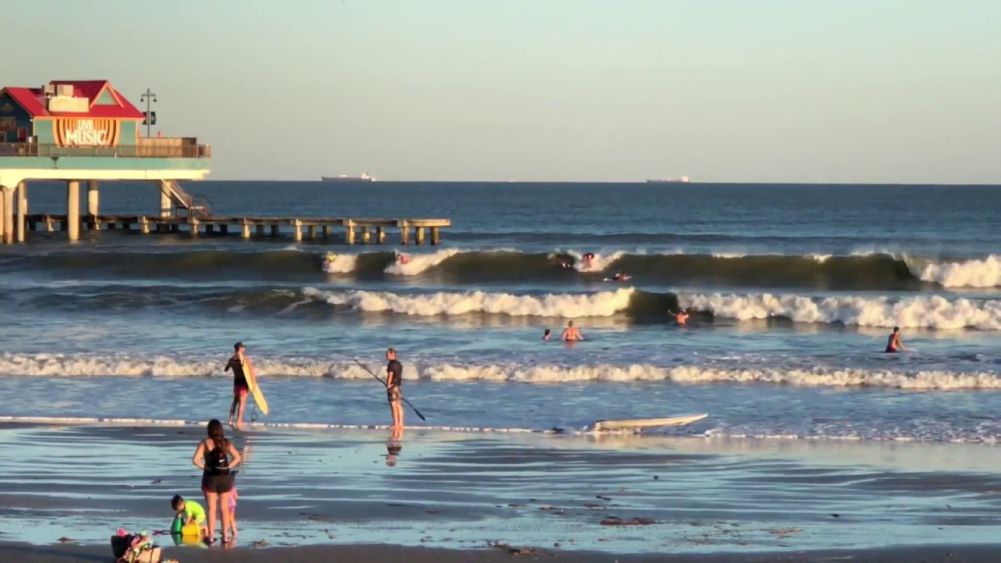
Sorprendentemente, esta emocionante experiencia no es una mera fantasía cinematográfica: es una realidad que los atrevidos surfistas texanos pueden perseguir. Si bien el acceso a estas colosales olas del canal de navegación requiere permisos y tiene un costo adicional, la recompensa es un viaje lleno de adrenalina como ningún otro. Más allá de esta emoción única, surfeando en texas Galveston ofrece un variado campo de surf, desde olas suaves adecuadas para principiantes hasta olas desafiantes que ponen a prueba las habilidades de los surfistas experimentados.
- Agua: Golfo de México
- Oleaje y viento: El oleaje suele ser pequeño y arrastrado por el viento. Las mejores condiciones se dan con vientos del sur.
- Temperatura del agua: La temperatura varía entre 65 °F en invierno y 85 °F en verano.
- Temperatura del aire: Inviernos suaves (50-60 °F) y veranos calurosos y húmedos (80-90 °F).
- Tamaño de la ola: Generalmente mide entre 1 y 3 pies, pero en ocasiones puede llegar hasta 6 pies.
- Niveles de multitud: Moderado, especialmente los fines de semana y festivos.
- El mejor momento para surfear: Primavera y otoño, cuando los vientos son favorables y hay menos gente.
- Puntos de lanzamiento : East Beach, Parque Estatal de la Isla de Galveston y Península Bolívar.
- Característica única: Surfear las estelas de grandes barcos en el canal de navegación de Galveston (requiere surfistas experimentados y un permiso).
- Habilidades: De nivel intermedio a avanzado para canal de navegación, de nivel principiante a intermedio para olas de playa.
- ¿Cuánto tiempo para llegar?: A 1 hora de Houston, a 4 horas de Dallas, a 5 horas de Austin
2. Playa Surfside
Cuando se trata de la Los mejores lugares para surfear en Texas . Surfside Beach se destaca como un destino privilegiado para los amantes de las olas. Surfside Beach cuenta con lugares icónicos para surfear, como el embarcadero de Quintana y el muelle de la calle 61, incluidos los famosos "Assholes", llamados así por la relación conflictiva de los propietarios locales con los surfistas.
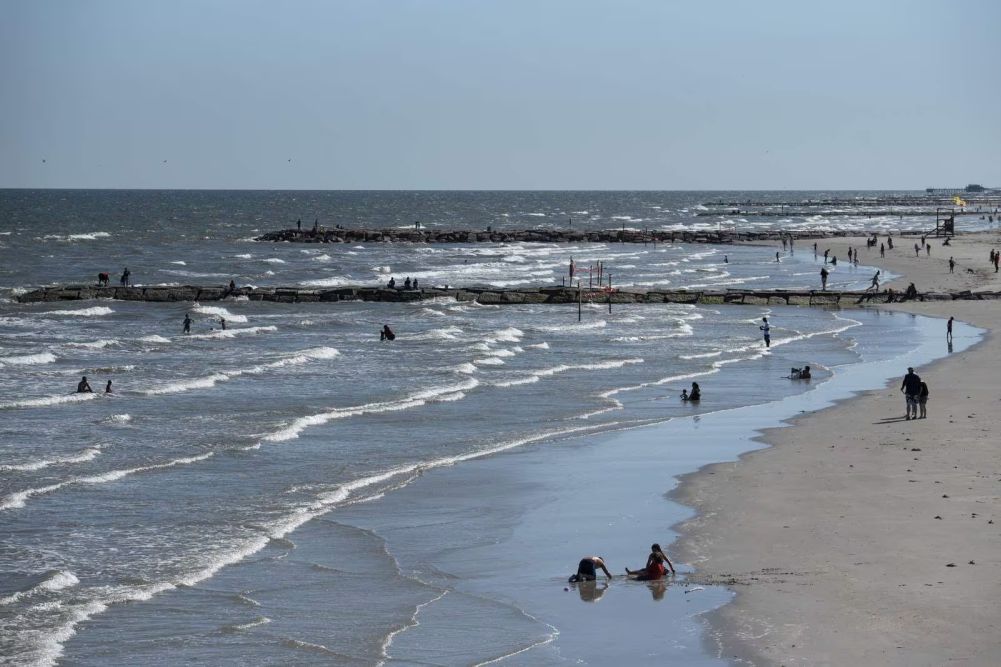
Si bien las olas de Galveston pueden ser blandas y la calidad del agua no es muy buena, el atractivo de Surfside Beach reside en sus olas constantes y la vibrante comunidad de surfistas que se reúne a lo largo de sus costas.
- Agua: Golfo de México
- Oleaje y viento: Marejadas constantes y vientos marinos crean condiciones limpias
- Temperatura del agua : 65-85 °F (18-29 °C)
- Temperatura del aire: 60-90 °F (15-32 °C)
- Tamaño de la ola : desde la rodilla hasta el pecho, series ocasionales por encima de la cabeza
- Niveles de multitud: Moderadamente concurrido, especialmente los fines de semana y festivos.
- El mejor momento para surfear: Temprano por la mañana, entre semana para que haya menos gente
- Característica única: La ruptura conocida como “Assholes”
- Habilidades: Adecuado para surfistas principiantes e intermedios.
- ¿Cuánto tiempo para llegar allí?: A 1 hora de Houston, 4,5 horas de Dallas, 5 horas de Austin
3. Matagorda
¿Se puede hacer surf en Texas ? Matagorda demuestra que es posible. Ubicada entre los puntos de surf más populares de Galveston y Port Aransas, Matagorda se considera un verdadero lugar “solo para locales”. Lo que distingue a Matagorda es su fondo marino profundo que asciende rápidamente hasta los bancos de arena, lo que crea las condiciones ideales para olas fuertes.
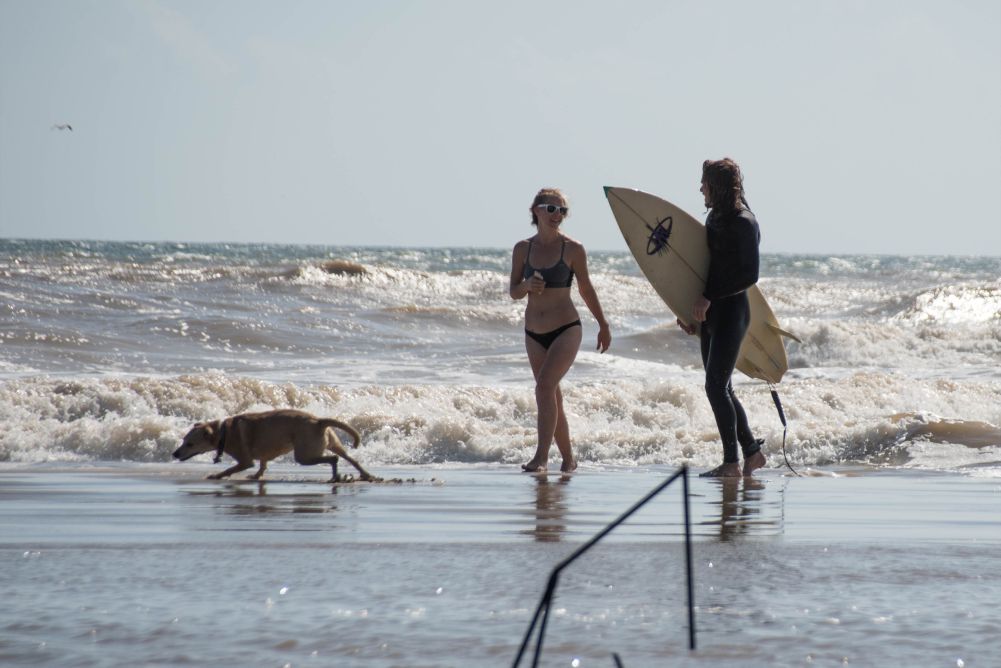
Aquí, los surfistas pueden esperar encontrar olas en la desembocadura del río con oleaje de derecha e izquierda con una longitud de onda que varía de 50 a 150 metros. Si bien la comunidad de surf local puede proteger ferozmente este lugar, sirve como testimonio del hecho de que, efectivamente, se puede surfear en texas – y Matagorda es una prueba viviente del potencial de surf sin explotar del estado.
- Agua: Golfo de México
- Oleaje y viento: Marejadas constantes y vientos marinos crean condiciones limpias
- Temperatura del agua: 65-85 °F (18-29 °C)
- Temperatura del aire: 60-90 °F (15-32 °C)
- Tamaño de la ola: Del pecho a la cabeza
- Niveles de multitud: Poco concurrido, en su mayoría gente local
- El mejor momento para surfear: Temprano en la mañana, marea media a alta.
- Característica única: Olas en la desembocadura del río, cambios rápidos de profundidad
- Habilidades: Intermedio a avanzado
- ¿Cuánto tiempo para llegar allí?: A 1,5 horas de Houston, a 5 horas de Dallas, a 5,5 horas de Austin
4. Corpus Christi
Corpus Christi ofrece una gran cantidad de lugares para practicar surf, y los embarcaderos de Fish Pass son un lugar destacado para Surf en Texas . Estos embarcaderos brindan protección contra las corrientes en casi cualquier dirección del oleaje, ofreciendo despegues rápidos y excelentes formas de olas.
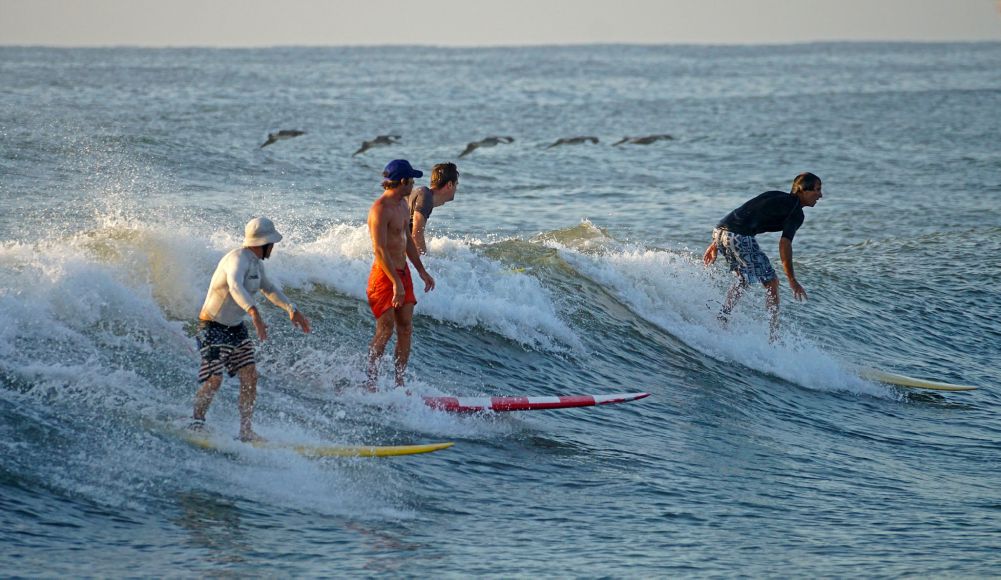
Independientemente de la marea, se producen oleajes decentes, con olas que alcanzan longitudes de 150 a 300 metros en los días buenos.
- Agua : Golfo de México
- Oleaje y viento: Olas constantes y vientos marinos crean condiciones limpias
- Temperatura del agua: 65-85 °F (18-29 °C)
- Temperatura del aire: 60-95 °F (15-35 °C)
- Tamaño de la ola: De la cintura a la cabeza
- Niveles de multitud: Moderadamente concurrido, especialmente los fines de semana y festivos.
- El mejor momento para surfear: Temprano por la mañana, entre semana para que haya menos gente
- Puntos de lanzamiento : Playas públicas, embarcaderos.
- Acceso: Playas públicas, estacionamiento de pago en algunas zonas.
- Característica única: Los muelles de Fish Pass ofrecen protección y una gran forma de ola
- Habilidades: Adecuado para surfistas de nivel intermedio a avanzado.
- ¿Cuánto tiempo para llegar allí?: 3,5 horas desde Houston, 6 horas desde Dallas, 4 horas desde Austin
5. Boca Chica
Boca Chica es un paraíso para los surfistas y ofrece algunas de las mejores El mejor surf en Texas Con sus izquierdas muy largas y una excelente transparencia. Cuando soplan los vientos del norte, esta ubicación realmente brilla, ofreciendo olas tubulares que son una vista común.
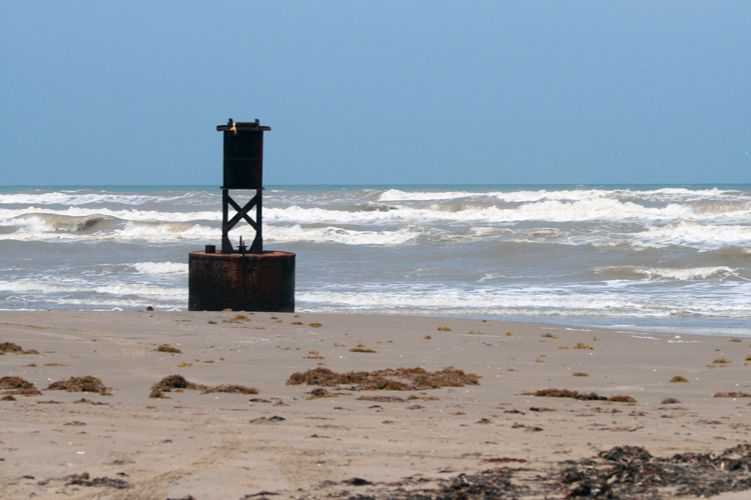
Ya sea que estés buscando olas en el rompeolas o en el malecón, Boca Chica ofrece olas potentes y largas que van desde los 150 a los 300 metros. A pesar de sus olas de clase mundial, la playa permanece agradablemente despoblada y con un ambiente tranquilo. Sin embargo, se recomienda tener cuidado ya que pueden aparecer fuertes corrientes, resacas y algún que otro tiburón, por lo que es imprescindible estar atento mientras se capturan estas olas épicas.
- Agua: Golfo de México
- Oleaje y viento: Los vientos del norte crean mejores oleajes, los vientos marinos crean condiciones limpias
- Temperatura del aguaTemperatura del aire: Ratura: 65-85 °F (18-29 °C)
- 60-95 °F (15-35 °C)
- Tamaño de la ola: Gastos generales a doble gasto general
- Niveles de multitud: Poco concurrido, en su mayoría gente local
- El mejor momento para surfear: Temprano por la mañana, oleadas de viento del norte
- Acceso: Playas públicas
- Comodidades: Servicios limitados cercanos
- Característica única: Golpes de izquierda largos y potentes
- Habilidades: Intermedio a avanzado
- ¿Cuánto tiempo para llegar allí?: A 5 horas de Houston, 7,5 horas de Dallas, 6 horas de Austin
6. Playa Jamaica
No muy lejos de Galveston se encuentra Jamaica Beach, una ubicación privilegiada para algunas de las El mejor surf en Texas . Aquí, olas fuertes y la oportunidad ocasional de hacer tubing esperan al surfista aventurero.
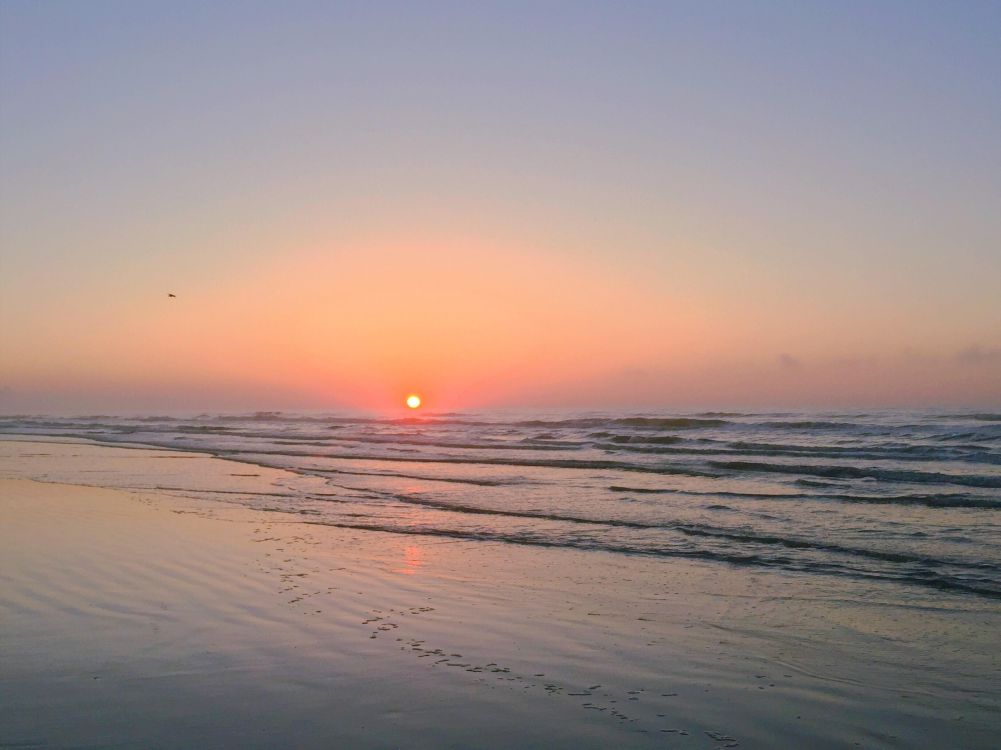
Con un fondo de arena y olas rompientes, Jamaica Beach ofrece oleajes tanto de derecha como de izquierda, que se adaptan a una variedad de estilos de surf. Todas las mareas brindan excelentes condiciones para surfear, con olas huecas, rápidas y divertidas que te dejarán con ganas de más.
- Agua : Golfo de México
- Oleaje y viento: Marejadas constantes y vientos marinos crean condiciones limpias
- Temperatura del agua : 65-85 °F (18-29 °C)
- Temperatura del aire: 60-90 °F (15-32 °C)
- Tamaño de la ola: Del pecho a la cabeza
- Niveles de multitud: Moderadamente concurrido, especialmente los fines de semana y festivos.
- El mejor momento para surfear: Temprano por la mañana, entre semana para que haya menos gente
- Puntos de lanzamiento: Puntos de acceso a playas públicas
- Característica única: Ondas huecas y rápidas
- Habilidades: Adecuado para surfistas de nivel intermedio a avanzado.
- ¿Cuánto tiempo para llegar allí?: A 1 hora de Houston, a 4 horas de Dallas, a 4,5 horas de Austin
7. Isla del Padre Sur
South Padre Island es un lugar muy querido por surfear en texas Para los surfistas expertos, ofrece olas únicas que lo distinguen como uno de los mejores destinos para surfear en el estado. Gracias a la pronunciada caída de la plataforma continental, los surfistas pueden disfrutar de una amplia gama de olas de rompientes de playa, desde largas hasta cortas, con direcciones de oleaje tanto de izquierda como de derecha.
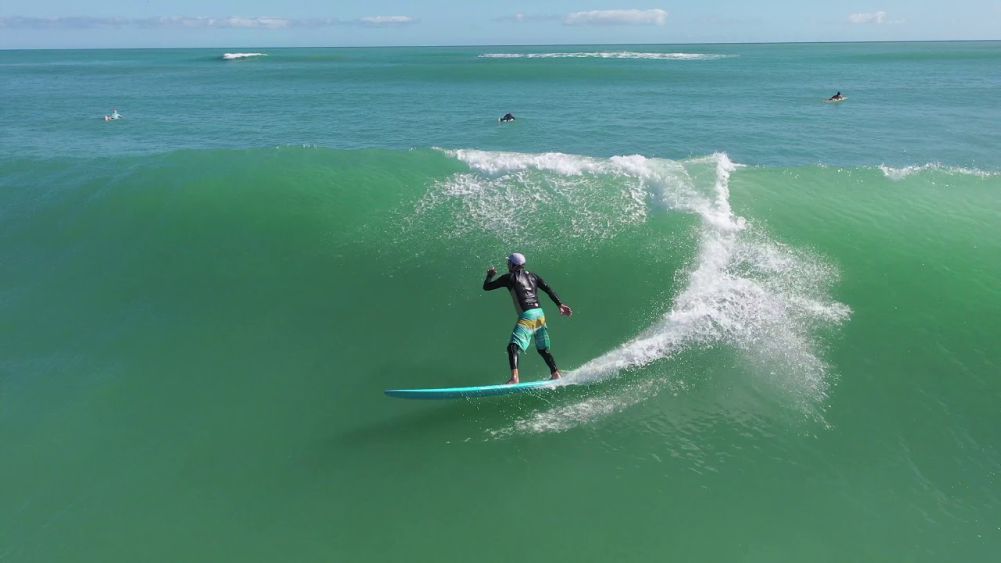
Esta combinación única crea un paraíso para los surfistas, donde cada sesión promete una experiencia fresca y estimulante.
- Agua: Golfo de México
- Oleaje y viento: Olas constantes y vientos marinos crean condiciones limpias
- Temperatura del agua: 65-85 °F (18-29 °C)
- Temperatura del aire: 60-95 °F (15-35 °C)
- Tamaño de la ola: De la cintura a la cabeza
- Niveles de multitud: Moderadamente concurrido, especialmente durante las vacaciones de primavera.
- El mejor momento para surfear: Temprano por la mañana, entre semana para que haya menos gente
- Característica única: Olas de playa largas y cortas, tanto de izquierda como de derecha
- Habilidades: Adecuado para surfistas principiantes y avanzados.
- ¿Cuánto tiempo para llegar allí?: A 6 horas de Houston, 8,5 horas de Dallas, 7 horas de Austin
8. Quintana
Al buscar el El mejor lugar para hacer surf en Texas . Quintana es un lugar que brilla cuando las olas se hacen demasiado grandes en la famosa playa Surfside. Este tramo de costa ofrece una gran combinación de olas de izquierda y derecha que tienen una velocidad y una potencia increíbles, lo que lo convierte en una experiencia de surf emocionante.
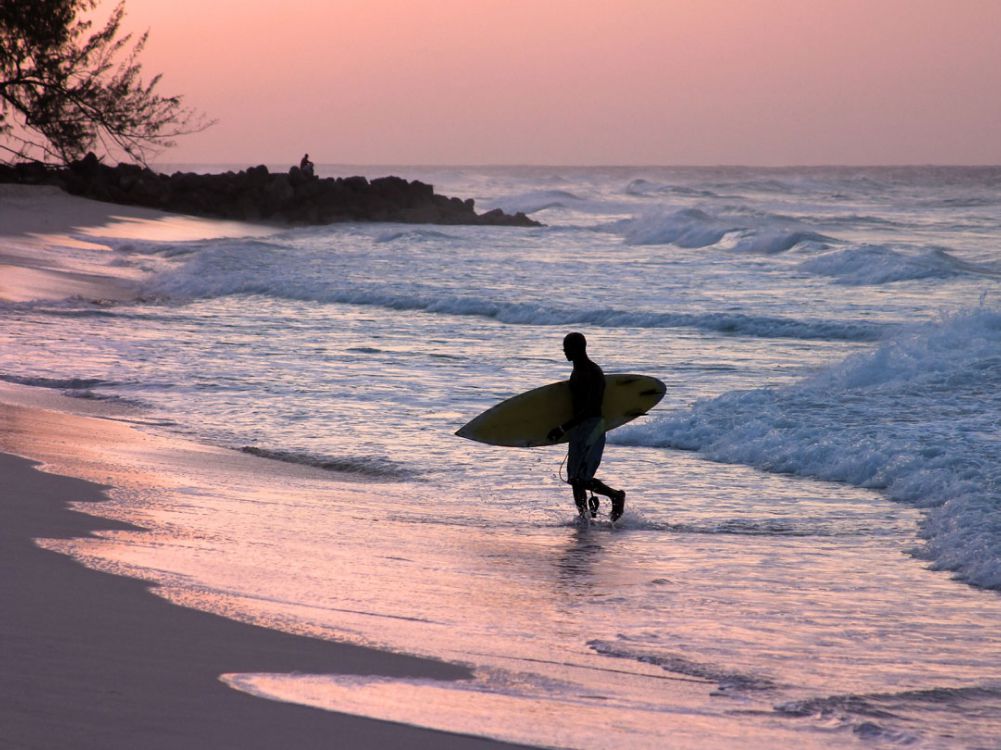
Las direcciones óptimas del viento para conseguir olas de calidad en Quintana son los cuadrantes noroeste, oeste y suroeste. Sorprendentemente, las olas aquí se pueden surfear en todas las mareas, ya sean bajas, medias o altas.
Por eso, cuando las grandes olas empiezan a azotar otras playas de Texas, los surfistas expertos se dirigen directamente a Quintana para aprovechar sus olas de alta calidad y alta velocidad provenientes de múltiples fuentes. Son actuaciones como estas las que consolidan la reputación de Quintana como uno de los principales destinos de surf en el estado de la estrella solitaria.
- Agua: Golfo de México
- Oleaje y viento: Marejadas constantes y vientos marinos del noroeste, oeste y suroeste crean condiciones limpias
- Temperatura del agua: 65-85 °F (18-29 °C)
- Temperatura del aire: 60-90 °F (15-32 °C)
- Tamaño de la ola: Gastos generales a doble gasto general
- Niveles de multitud: Moderadamente concurrido, especialmente los fines de semana y festivos.
- El mejor momento para surfear: Temprano por la mañana, entre semana para que haya menos gente
- Característica única: Olas rápidas y potentes
- Habilidades: Intermedio a avanzado
- ¿Cuánto tiempo para llegar allí?: A 1 hora de Houston, 4,5 horas de Dallas, 5 horas de Austin.
9. Muelle de Mansfield
¿Se puede practicar surf en Texas ? ¡Por supuesto! Un destino excelente pero remoto para practicar surf en el estado es Mansfield Jetty. Para acceder a este lugar apartado, necesitará un vehículo con tracción en las cuatro ruedas y equipo de acampada, ya que es una zona de playa no desarrollada.
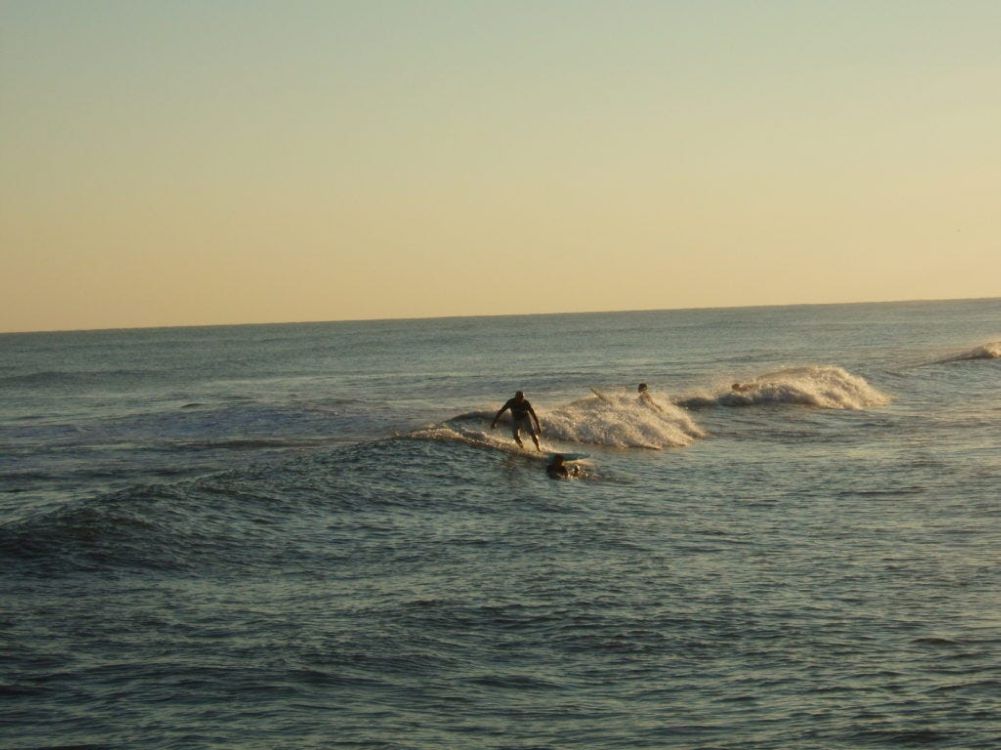
Sin embargo, Mansfield Jetty ofrece olas consistentes que rompen desde la izquierda y la derecha. Las olas tienden a tener una buena frecuencia, aunque se recomienda tener cuidado debido a las posibles corrientes de resaca, las áreas rocosas y el avistamiento ocasional de tiburones. Pero como es probable que no haya muchas personas alrededor, tendrás este lugar prístino para surfear para ti solo si no te importa la lejanía. Entonces, para los surfistas aventureros de Texas, Mansfield Jetty ofrece una ola fantástica en alta mar con un ambiente claramente indómito.
- Agua: Golfo de México
- Oleaje y viento: Recibe oleajes del Golfo y vientos predominantes del sureste.
- Temperatura del agua: Mediados de 70 °F a mediados de 80 °F
- Temperatura del aire: Entre 70 y 90 °F
- Tamaño de la ola: De 2 a 4 pies típicos, puede crecer más con vientos del norte
- Niveles de multitud: Moderado
- El mejor momento para surfear: A finales del verano o principios del otoño, cuando hay menos gente y el agua está más cálida.
- Acceso: Estacionamiento público gratuito junto a FM 3005
- Comodidades : Ninguna
- Característica única: El embarcadero proporciona algo de refugio y puede dar forma a las olas.
- Habilidades: Principiante a intermedio
- ¿Cuánto tiempo para llegar allí?: A 1 hora de Houston
10. Muelle Bob Hall
¿Dónde hacer surf en Texas ? Una excelente opción es Bob Hall Pier, ubicado justo al otro lado de la calzada JFK desde Corpus Christi en Padre Balli Beach Park. Este lugar es conocido por ofrecer olas más rápidas y con más tubos en comparación con otras áreas de la región, lo que lo convierte en un lugar ideal para los practicantes de tabla corta.
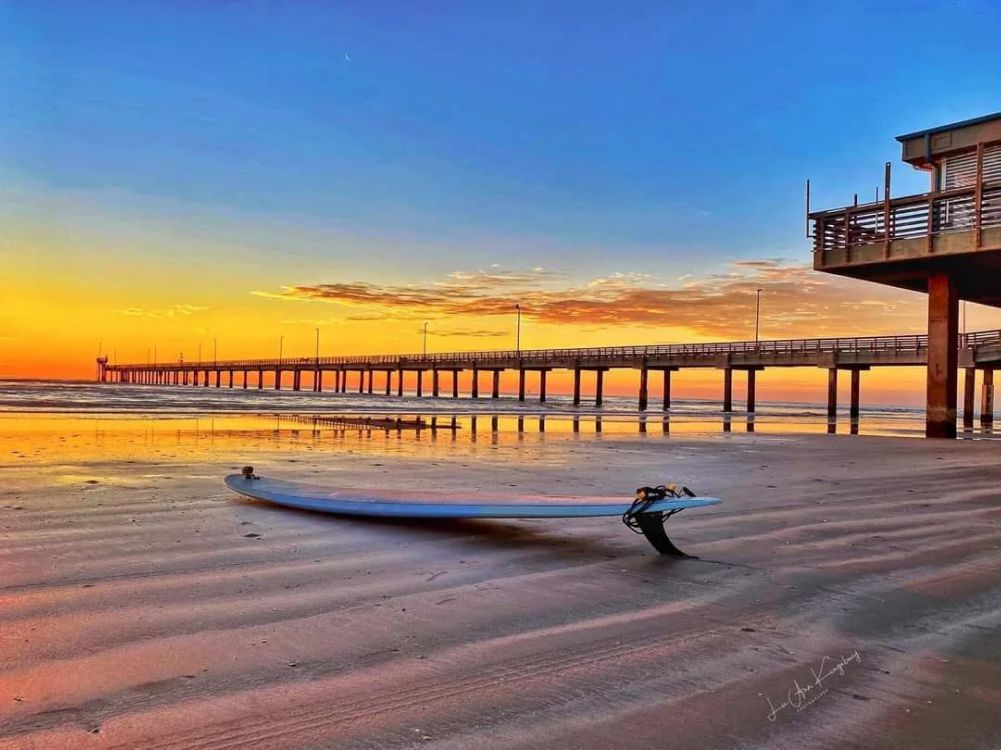
Los surfistas pueden esperar encontrar olas de izquierdas y de derechas que se desprenden de la rompiente de la playa en Bob Hall Pier. Las olas aquí tienen un carácter enérgico y hueco que te permite abrirte y demostrar tus habilidades de surf de alto rendimiento. Si bien la forma de la ola puede no ser siempre perfecta, los frentes de ola de calidad brindan un desafío divertido para los surfistas de Texas más experimentados que buscan ir a por todas.
- Agua: Golfo de México
- Oleaje y viento: Oleaje del Golfo, vientos del este
- Temperatura del agua : 70 °F a mediados de 80 °F
- Temperatura del aire: Entre 70 y 90 °F
- Tamaño de la ola: 2-4 pies típicos
- Niveles de multitud: Pesado los fines de semana de verano
- El mejor momento para surfear: Déjate seducir por multitudes más pequeñas
- Puntos de lanzamiento : Playa en el lado norte del muelle.
- Característica única: El muelle pesquero forma algunas olas
- Habilidades: Todos los niveles
- ¿Cuánto tiempo para llegar allí?: 3,5 horas desde Houston
11. Puerto Aransas
Port Aransas, o Puerto A como lo llaman los lugareños, es un lugar privilegiado para surfeando en texas Justo al lado de Corpus Christi. El agua hasta el pecho y las olas lentas lo convierten en un lugar ideal para que los padres envíen a sus hijos a escuelas de surf durante los meses de verano.
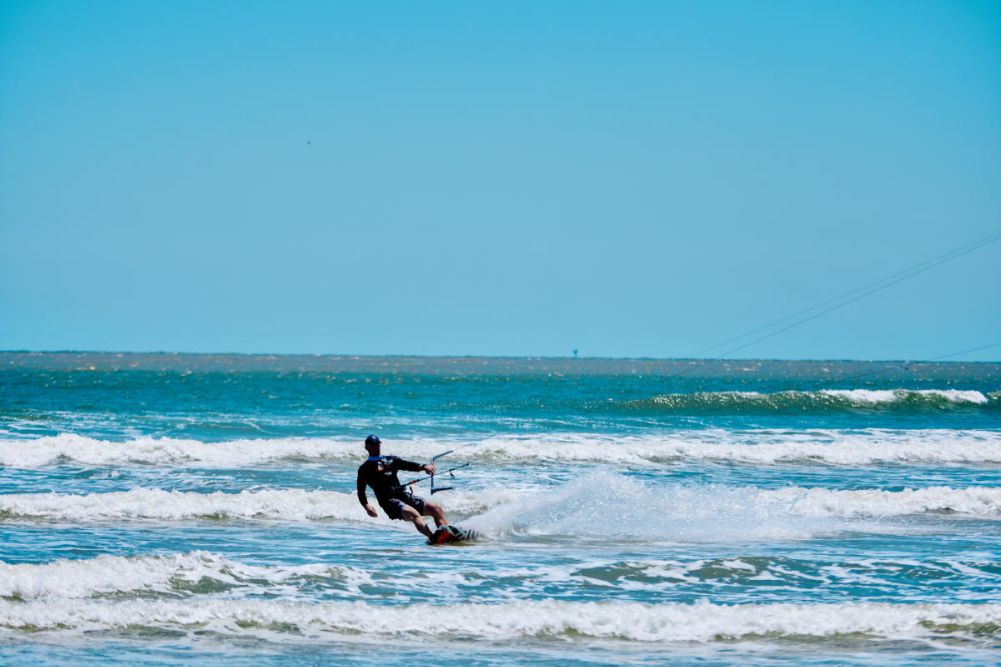
El muelle Horace Caldwell es un punto de interés regional conocido por sus olas más suaves, perfectas para surfistas de todos los niveles. Como alternativa, un viaje en ferry de 10 minutos lo lleva a la isla de San José, que ofrece olas más pequeñas y playas con poca gente, ideales para principiantes y una escapada relajante.
- Agua: Golfo de México
- Oleaje y viento : oleaje del golfo, vientos variables
- Temperatura del agua: 60 °F en invierno, 80 °F en verano
- Temperatura del aire: Entre 50 y 90 °F
- Tamaño de la ola: De 2 a 5 pies típicos, puede haber olas más grandes
- Niveles de multitud: Pesado en verano
- El mejor momento para surfear: Primavera y otoño para una mejor combinación de olas y menos multitudes.
- Característica única: Puede ser una ola rompiente muy consistente.
- Habilidades: Todos los niveles
- ¿Cuánto tiempo para llegar allí?: A 4 horas de Houston
12. Muelle Horace Caldwell
Cuando se trata de la El mejor surf en Texas , Horace Caldwell Pier ocupa un lugar destacado como uno de los favoritos de la región gracias a su ambiente agradable y la calidad confiable de sus olas.
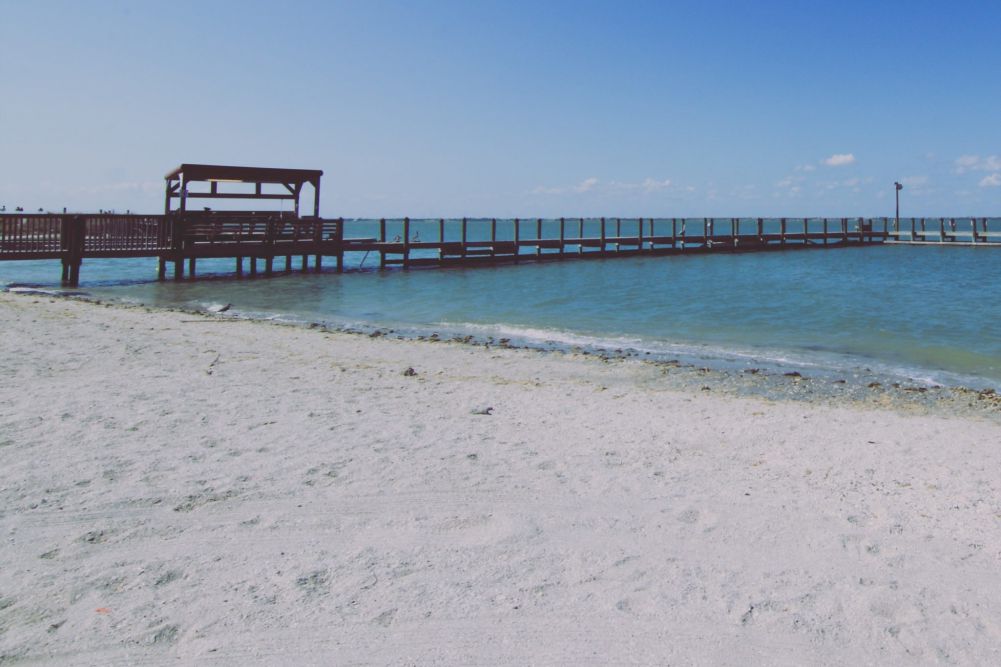
Este lugar es conocido por producir olas bien formadas que rompen en el lado izquierdo del muelle, ofreciendo una forma más rápida y robusta en comparación con el lado derecho. Si bien no son necesariamente enormes en tamaño, estas olas puntiagudas brindan paseos increíblemente divertidos, especialmente con marea baja cuando se mantienen bien levantadas. Las olas satisfacen diferentes niveles de habilidad, los surfistas de todos los niveles, desde principiantes absolutos hasta profesionales experimentados, pueden disfrutar de una sesión agradable aquí.
- Agua: Golfo de México
- Oleaje y viento: Marejadas en el Golfo, vientos predominantes del sureste
- Temperatura del agua: Mediados de los 60 °F a mediados de los 80 °F
- Temperatura del aire: Entre 60 y 90 °F
- Tamaño de ola : 2 a 4 pies típicos
- Niveles de multitud: Moderado a fuerte
- Mejor época para surfear : otoño e invierno, cuando hay menos gente
- Característica única: El muelle puede dar forma a algunas olas
- Habilidades: Principiante a avanzado
- ¿Cuánto tiempo para llegar allí?: A 1 hora de Houston
Con su naturaleza poco concurrida, olas fáciles de usar y condiciones de surf confiables, no es de extrañar que Horace Caldwell Pier surja como uno de los mejores lugares para practicar surf para los amantes de las olas en todo Texas.
13. Muelle Norte
Para aquellos que se preguntan Si hay olas en Texas , North Jetty responde a esa pregunta con un rotundo "sí" una y otra vez. Muchos consideran que este es el mejor lugar a lo largo de toda la costa de Texas para conseguir olas de alta calidad.
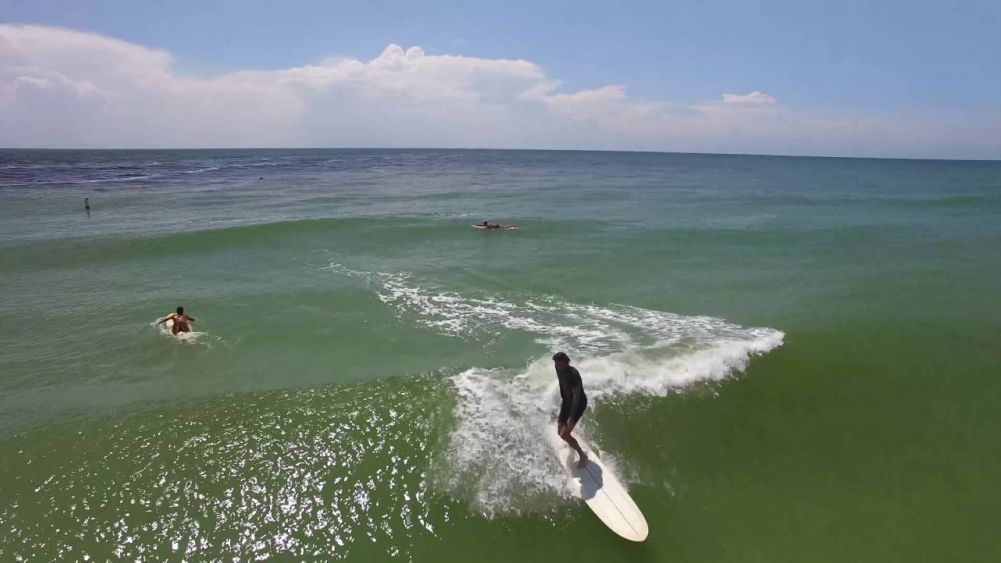
Los picos que se forman en el lado norte del embarcadero son famosos por su forma limpia y abarrotada y su velocidad vertiginosa en el interior. Además, esta rompiente puede soportar casi cualquier dirección de oleaje y tiende a girar con gran fuerza cuando los vientos soplan desde el oeste.
- Agua : Canal de navegación/Golfo de México
- Oleaje y viento: Bloqueado por el oleaje directo del Golfo, oleaje de viento más pequeño
- Temperatura del agua: Entre 15 y 27 °C (60 y 85 °F)
- Temperatura del aire: Entre 60 y 90 °F
- Tamaño de la ola: 1-3 pies típico
- Niveles de multitud: Luz
- El mejor momento para surfear: Todo el año con menos gente que las playas.
- Puntos de lanzamiento: Costa rocosa cerca del embarcadero
- Característica única: El embarcadero da forma a algunas olas
- Habilidades: Intermedio a avanzado
- ¿Cuánto tiempo para llegar allí?: A 1 hora de Houston
14. Isla San José
La isla de San José, a la que se puede acceder en un ferry de 10 minutos desde Aransas Pass (conocido como St. Joe's), es un paraíso de surfeando en texas cuando el viento sopla desde el sureste, produciendo las legendarias olas texanas.
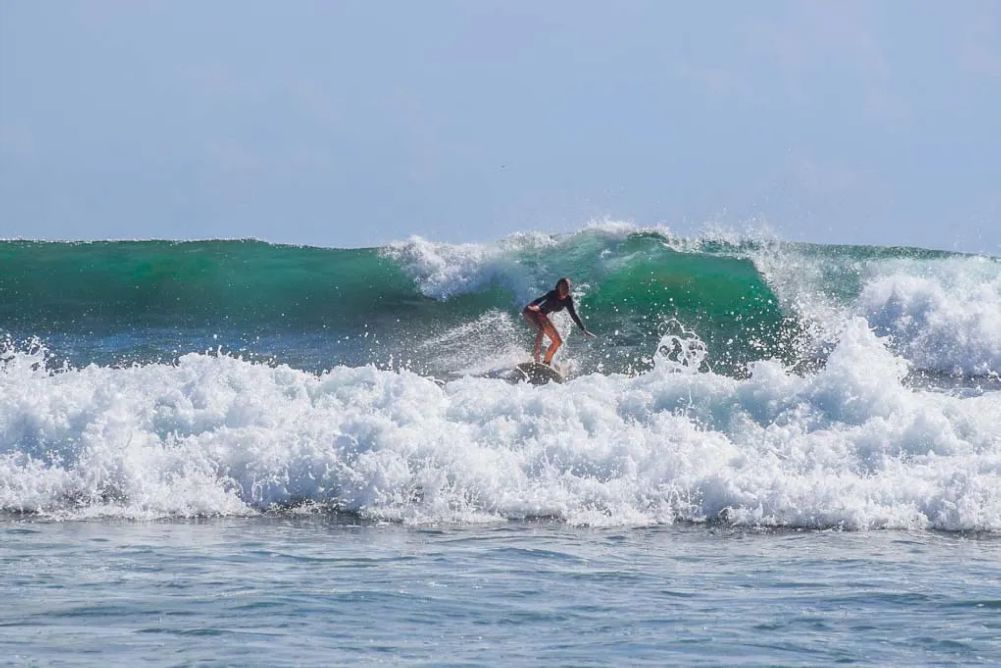
Sin embargo, la facilidad de acceso, las medusas (incluidas las carabelas portuguesas) y los desechos arrastrados por la corriente pueden ser motivo de queja. Los más aventureros pueden remar a través del canal en los embarcaderos de Aransas cuando las olas están a la altura de la cabeza y crear recuerdos inolvidables. Los amantes de las olas no deben olvidarse de traer repelente de insectos cuando vengan aquí.
- Agua: Golfo de México
- Oleaje y viento: Recibe exposición total a las olas del Golfo y vientos variables.
- Temperatura del agua: Entre 15 y 27 °C (60 y 85 °F)
- Temperatura del aire: Entre 60 y 90 °F
- Tamaño de la ola: De 3 a 6 pies típicos, grandes olas posibles
- Niveles de multitud: Luz
- El mejor momento para surfear: Primavera y otoño para los vientos marinos
- Acceso: Servicio de ferry a la isla
- Comodidades: Camping primitivo en una isla subdesarrollada
- Característica única: Olas de playa remotas con olas constantes
- Habilidades: Intermedio a avanzado
- ¿Cuánto tiempo para llegar allí?: 4 horas desde Houston hasta el embarcadero del ferry
15. Piscina de surf Waco
Con una variedad tan grande de olas en oferta, la piscina de surf de Waco es un testimonio de la El mejor surf en Texas , todo en un entorno controlado y constante. Al llegar, te recibirá la vista de olas verdes que te llegan al pecho y que se abren paso a través de una piscina amplia de 30 a 60 yardas. Organizada en grupos de tres olas, cada una de las cuales llega cada 70 segundos, esta piscina de olas para surfear garantiza una gran cantidad de olas, con entre 120 y 160 oportunidades por hora para atrapar la ola perfecta.
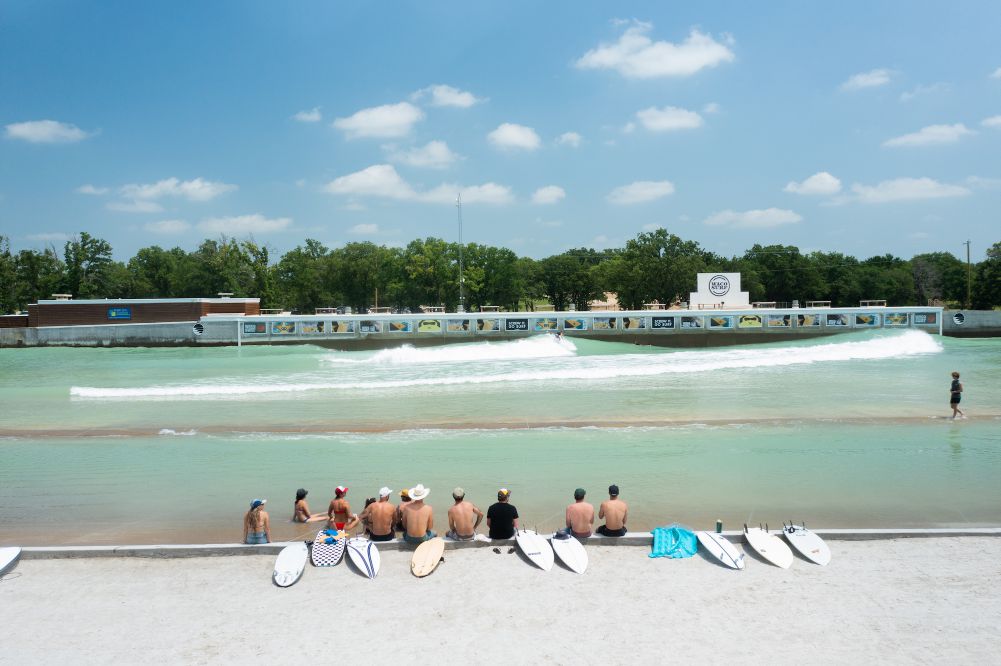
- Agua: Piscina de agua dulce
- Oleaje y viento: La máquina genera ondas
- Temperatura del agua: Mediados de 70 °F a mediados de 80 °F
- Temperatura del aire: Entre 60 y 90 °F
- Tamaño de la ola: Hasta 6 pies
- Niveles de multitud: A menudo lleno de gente
- El mejor momento para surfear: Consultar horario, sesiones nocturnas disponibles
- Acceso: Entrada paga
- Característica única : Surf interior en piscina artificial.
- Habilidades: Todos los niveles
- ¿Cuánto tiempo para llegar allí?: 3,5 horas desde Houston
Las mejores épocas del año para surfear en Texas
Las mejores épocas del año para quienes buscan surfeando en texas Depende en gran medida de la zona de surf específica, pero generalmente se dividen en dos temporadas altas:
- Julio a octubre: Este es el momento en que muchos de los principales lugares de la Costa del Golfo, como Galveston, Surfside y North Padre Island, experimentan sus oleajes más consistentes, cuando los sistemas tropicales que se originan en México pueden enviar potentes oleajes del sur.
- Febrero a abril: Sin embargo, las multitudes también alcanzan su punto máximo durante esta temporada de clima cálido. A fines del invierno y principios de la primavera, suele haber menos gente en el agua, pero aún existe la posibilidad de que se produzcan grandes oleajes de larga duración originados por las tormentas del norte.
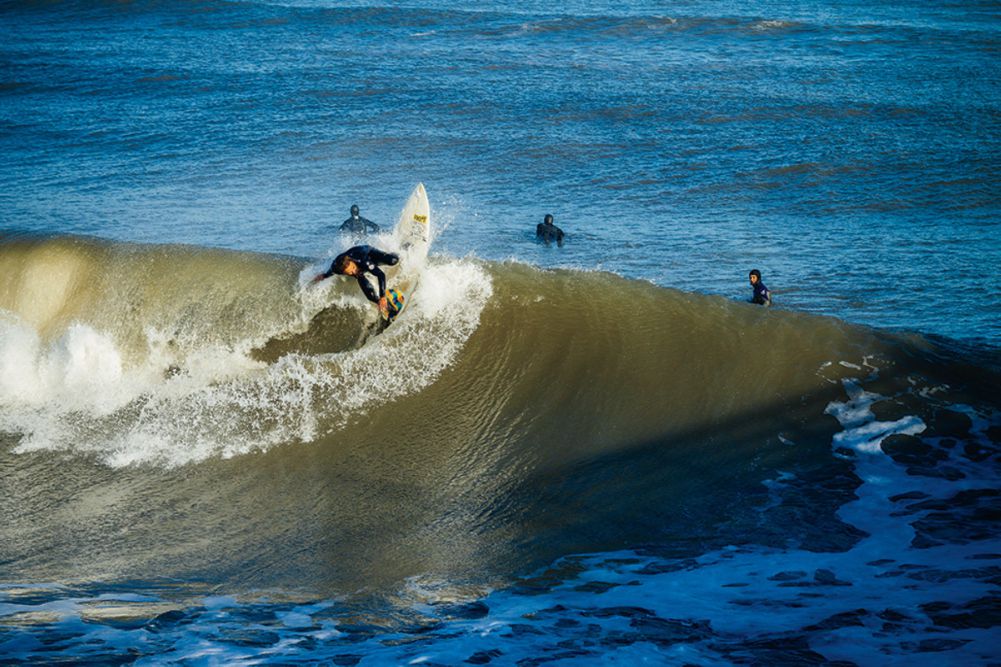
Sin importar la temporada, cualquier lugar desde South Padre Island hasta el extremo sur del estado puede brindar condiciones ideales para surfear desde el hombro hasta la cabeza en cualquier día para los surfistas dispuestos a perseguir las olas.
Equipo de surf para las olas de Texas
Al prepararse para Para practicar surf en Texas , es importante tener en cuenta las condiciones locales y adaptar el equipo en consecuencia. A continuación, se ofrecen algunas recomendaciones:
-
Tipos de tablero:
- Tablas cortas (6'0″ – 6'8″): Ideal para las olas, a menudo más pequeñas y blandas, que se encuentran a lo largo de la mayor parte de la costa de Texas.
- Tablas de surf/híbridas (7'0″ – 8'0″): Formas versátiles que funcionan bien en las variables condiciones del Golfo.
- Tablas largas (9'0″+): Ideal para días más pequeños y para caminar por la orilla en olas de playa más suaves.
-
Accesorios:
- Botines: Las playas rocosas y los muelles pueden resultar duros para los pies.
- Guantes: Ayuda a prevenir las erupciones por cera causadas por el agua, que suele estar tibia.
- Traje completo 3/2: Para los meses más fríos del invierno, cuando la temperatura del agua desciende hasta los 60 grados.
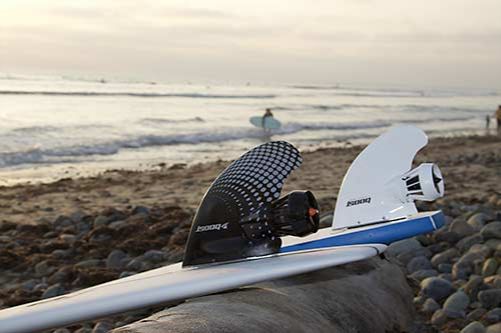
Surfeando con un Aleta de refuerzo También podría ser un punto de inflexión para las típicas olas blandas de Texas. aleta de hélice eléctrica Proporciona 20 libras adicionales de empuje para ayudarte Atrapa 3 veces más olas y mantener la velocidad en condiciones subóptimas. A diferencia de otros sistemas de propulsión para surf, la aleta Boost Fin se puede conectar rápidamente a cualquier tabla de surf en tan solo 5 minutos .
Domina las olas de Texas con la aleta Real Boost
Surfeando en Texas ofrece excelentes oportunidades para que los principiantes perfeccionen sus habilidades, y con el equipo adecuado, como el auténtico Con la aleta Boost , podrás aprovechar al máximo los mejores lugares para surfear para principiantes. El impresionante empuje y el fácil control de la aleta Boost te ayudarán a atrapar más olas y progresar rápidamente.
Solo asegúrate de comprar únicamente a través de los canales autorizados de Boost Surfing para garantizar que obtengas lo mejor con el respaldo de una garantía total. Con un poco de preparación y la aleta Boost genuina, las hermosas olas de Texas te esperan para poner a prueba tus habilidades.


Compartir:
Los 11 mejores lugares para hacer surf en Florida
Las 9 lesiones más comunes en el surf y 3 consejos para evitarlas